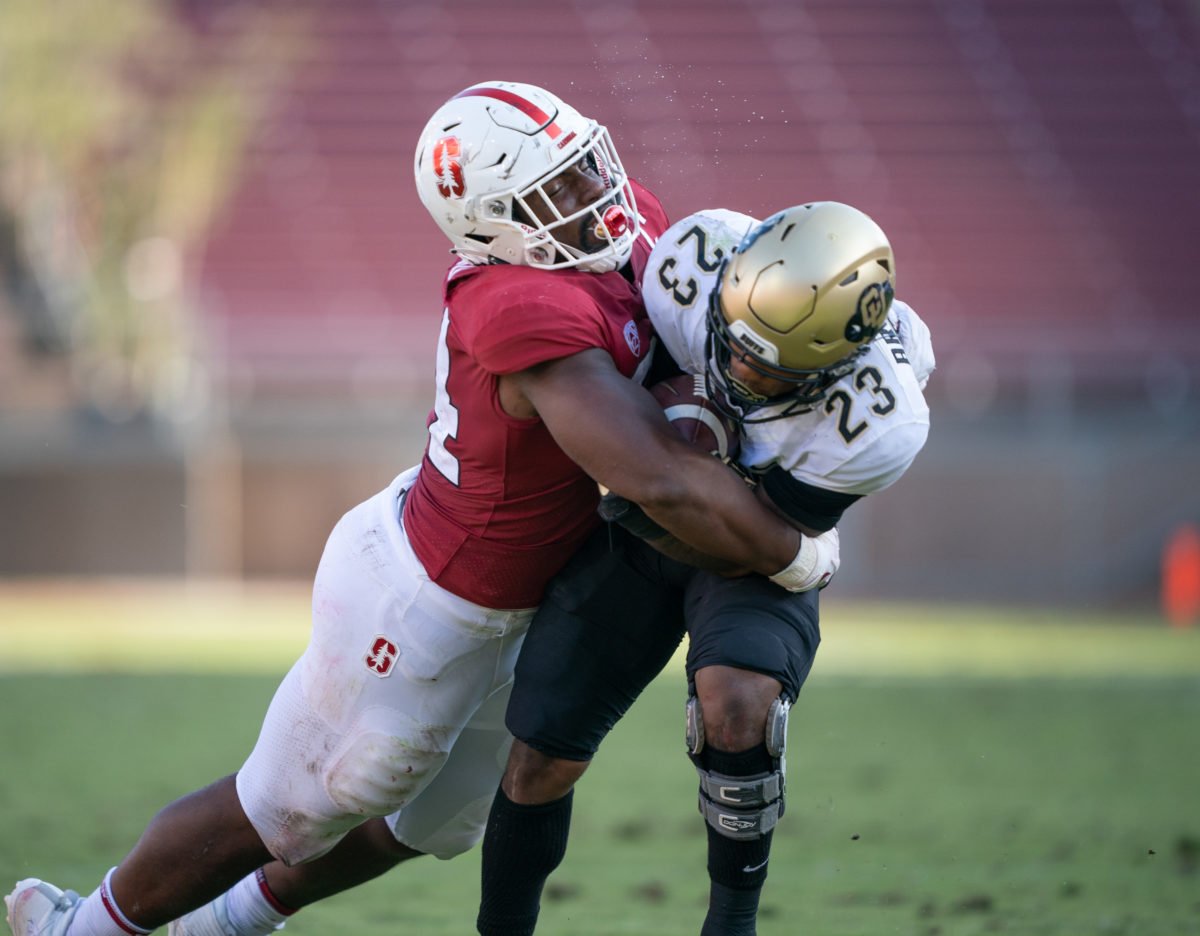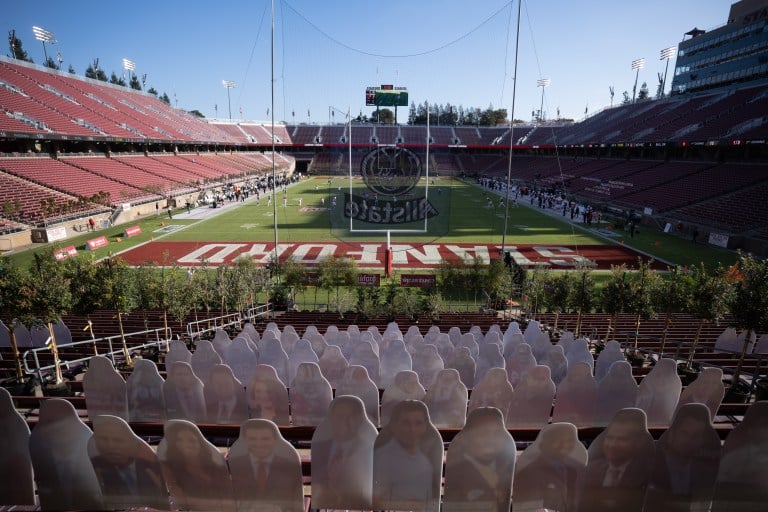After two unimpressive showings, Stanford is 0-2 and facing a Washington State team it has not beaten since 2015. What was once a promising season is now anything but. Of course, all of that can change in an instant. The Daily’s Jibriel Taha, Ells Boone and Jacob Neidig talk about offensive schemes, defensive woes and potential panic.
Last week, senior quarterback Davis Mills threw the ball 56 times, the eighth-most in school history. Last year against Wazzu, Mills threw 50 times for a school-record 504 yards. K.J. Costello ’20 threw 43 times in 2018 but just 20 times in 2017. Washington State’s defense is one of just two Pac-12 defenses that have allowed more than Stanford’s 35 points per game. How should Stanford attack Wazzu: pass heavy, run heavy or balanced?
Jibriel Taha (JT): The Cardinal will start off leaning toward run-heavy, as they always do. But if they struggle to establish the run game, like they did on Saturday, they need to quickly shift to relying more on quarterback Davis Mills’ arm. The strength of this offense is Mills combined with one of the best wide receivers corps in the conference, and I expect them to be in sync after having Mills available for a full week of practice. Also, don’t forget that sophomore running back Austin Jones had seven receptions for 48 yards last game, as well as the fact that the Cardinal failed to execute several promising screen plays. Add in the solid pass protection the offensive line has provided the past two weeks, and Mills has the talent around him to lead a prolific offense with his arm.
Ells Boone (EB): I think Stanford needs to go with a balanced attack against the Cougars on Saturday. The Cardinal offense has been known to be too predictable of late, so it is important to mix it up as much as possible. The offensive line has to play like they did against Oregon for the running game to be effective. In addition, Mills has a game under his belt and will actually get to practice this week. Hopefully he will come out firing from the start come Saturday. This offense has a lot of potential, but the execution and play-calling has to get better.
Jacob Neidig (JN): It’s no secret that the Stanford wide receiver corps is one of the strongest position groups on the team and in the entire Pac-12. The most important part of the offensive game plan should be to get the ball to these players in space where they make big plays. In order to set up these big plays, a healthy dose of Jones and fellow running back Nathaniel Peat should be utilized early in the game. Drawing extra Washington State defenders into the box will open up the play action pass and give Mills the opportunity to take advantage of one on one matchups on the outside. A balanced attack is the way to go until Washington State proves they can sufficiently stop either the run or the pass.
The two quarterbacks who have played Stanford, Tyler Shough and Sam Noyer, are No. 1 and 2 in the conference in passer rating. After two straight weeks giving up 35 points, how bad is the defense?
JT: It’s not good. Injuries have piled up, and a few guys were lost in the transfer portal — but more than anything, the unit has simply not executed. We saw it countless times against Colorado: the secondary getting gashed by a 15-yard slant over the middle, completely blown coverage leading to seven more points and outside linebackers getting repeatedly fooled by the read option. Add in a lack of pressure on the quarterback, and it’s not a recipe for success. The good news: The defense is better than what we’ve seen the past two weeks. It’s not going to win them games, but I expect we’ll see many of the glaring mistakes get cleaned up as the group gets deeper into this shortened season.
EB: There have been too many lapses in execution, whether it be failing to defend the read option or not covering a receiver downfield. The Cardinal have already lost too many linebackers to injury to count, and the defensive line still has not recorded a sack through two games. The unit will most definitely have to step it up against Washington State, a team known for being pass-happy. The secondary is fully healthy now with sophomore cornerback Kyu Blu Kelly returning against Colorado, so hopefully we will see some improvement.

JN: After giving up 35 points to Oregon in Week 1, it was relatively unclear how good or bad the defense would be. On one hand, they were unable to stop the Duck ground game or put pressure on the quarterback, yet they did force two turnovers and were without starting cornerback Kelly. Against Colorado, the defense gave us a much more clear picture of some of the struggles that they might face this season. An inability to consistently stop the run, put pressure on the quarterback and communicate will be three of the biggest challenges that this defense must overcome. These overt holes will allow opposing offenses to exploit the Stanford defense until they are fixed. However, a strong showing by the defensive line and linebacker groups this week stopping the run and putting pressure on Wazzu quarterback Jayden de Laura as well as sound coverage from the secondary can quickly turn the season around for the unit.
Now, an existential question. Stanford has lost six games in a row for the first time since pre-Harbaugh. Stanford Stadium has lost its magic. Is it time to panic?
JT: It really depends on what your expectations for the program are. If you expect Stanford to be a perennial conference favorite, top-10 team and outside CFP contender — you should have panicked a couple of years ago. That ship seems to have sailed. Stanford finished the year No. 3 in 2015, and half a decade later it’s lost six straight games and is headed down the path of being bowl-ineligible for the second straight year. It’s both incredibly frustrating and heartbreaking at the same time. However, if your expectations are that Stanford will be competitive for the division title and a perennial top-25 team, while this isn’t the year, you should only be somewhat worried. Stanford has consistently put together top-25 recruiting classes, so the talent is there to reach these goals. However, if the Cardinal can’t surge up the recruiting rankings for this year, the Cal Golden Bears continue to improve their recruiting in the Bay Area and the Cardinal keep suffering bad losses that hurt its national relevance, you can start to panic — but we’re not quite there yet.
EB: I agree with Jibriel. Stanford is no longer a bonafide top-25 team, let alone a Pac-12 powerhouse. There is most definitely cause for concern as the talent level on the team is akin to a top-15 caliber school, yet we are not seeing results. Adding fuel to the fire, next year’s incoming recruiting class is ranked No. 59 in the country, the lowest Stanford has had since the 2006 class. Yes, you can point to the number of injuries the Cardinal suffered last season and the effect COVID-19 has had on this season, but we should be seeing better results from the talent level that is present in the locker room.
JN: As someone who grew up during the golden era of Stanford football, I became accustomed to Rose Bowl appearances without realizing how grateful I should have been. While I understand that being a perennial contender isn’t a realistic expectation, the alarm bells have still been going off for some time now. As previously mentioned by Jibriel and Ells, Stanford recruiting has been very strong recently, yet is showing signs of getting worse. This is alarming for two reasons. The first reason is player development. The Stanford coaching staff has brought in some of the most coveted high school players in recent years, yet has not been able to develop these athletes in a way that translates into on field success. The inability to train these players in a way that elevates their game and thus the program is a clear alarm for me personally. Second, Stanford has begun to lose head to head recruiting battles with Pac-12 rivals such as Oregon and California-Berkeley. While this has not cemented into a trend, it is crucial that David Shaw turns this around before it turns a critical long-term issue.
Contact Jibriel Taha at jtaha ‘at’ stanford.edu, Ells Boone at eboone24 ‘at’ stanford.edu and Jacob Neidig at jhneidig ‘at’ stanford.edu.
